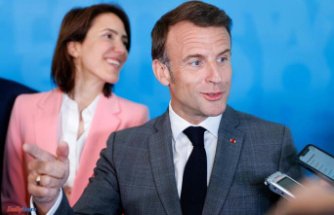Putin's invading army is on the defensive in Ukraine: Ukrainian troops have not only crossed the Oskil. Kyiv also controls several strong bridgeheads on this front section.
The fronts in the Ukraine war remain in motion: After the surprisingly extensive successes of the September offensive to liberate the Kharkiv region, Ukrainian units have not only liberated the strategically important city of Kupjansk and secured several crossings over the Oskil River in the past few days, but at the same time also crossed the broader river plains of the Siwerskyi Donets in at least three places.
The Ukrainian advances in the east of the country are of enormous importance for the further course of the war. The two river valleys form natural barriers that run through Ukraine from north to south and from west to east. The river valleys create obstacles and bottlenecks for attackers and defenders. Even before the war there were only a few road connections from Kharkiv to the east and from Donbass to the north. A look at the map shows the current military situation in eastern Ukraine:
The Ukrainian bridgeheads on the left, east bank of the Oskil provide the Ukrainians with excellent starting points for further action. From there, the Ukrainian attacks threaten the flank of the Russian army in the Donbass. According to consistent reports, Ukrainian units are already on the other side of the Oskil, at least near Kupyansk. Some Western military experts also believe it is possible that the Ukrainians advanced further north at Dvorichna and further south at Borawa via the Oskil.
Coming from the Russian border in the north, the river Oskil runs like a wide bar through a partly densely wooded hilly landscape to the south. The river is not easy to cross at any point. Even before the war there were only a few road connections from west to east. Individual bridges were already blown up by the Ukrainians at the beginning of the war to stop the attacking Russians. Other crossings fell victim to the fighting over the past few days.
The courses of the rivers force supply columns and heavy war equipment to make major detours. The lower reaches of the Oskil appear to be unsuitable for the use of pontoon bridges: the dam of a hydroelectric power station dams the river from Kupjansk over a distance of a good 60 kilometers to form a wide lake. And below the dam in the village of Oskil, it is only a few kilometers to the confluence with the Siwerskyi Donets. This current is obviously easier for both sides to overcome.
According to reports, there have been major combat operations here in the past few days: Ukrainian units have recently been able to recapture several towns on the other bank of the river near Lyman, including Studenok, Sosowe, Swjatohirsk and Oserne - the place that was last known to have been used by a Russian carpet bombing with incendiary agents became. The battle for the town of Lyman itself appears to be continuing.
The exact course of the front remains unclear, and the precise military situation on the ground is confusing. For obvious reasons, the general staff in Kyiv and the political leadership of Ukraine are keeping a low profile. Details of the Ukrainian actions can still only be derived indirectly from verifiable image and video material and from the statements made by both sides.
It is obvious that the Russian military has recently had to accept further setbacks: in a bend on the Donbass front, Ukrainian forces managed to advance to the northern bank of the Siverskyi Donets near Bilohorivka. Should the Ukrainians succeed in expanding this bridgehead, future Ukrainian advances could target deep inland in the Luhansk region.
The announced partial mobilization in Russia is unlikely to affect the military situation in the short term. The Ukrainian side currently holds several key positions to continue the September offensive. Accordingly, the Ukrainian President Volodymyr Zelenskyj reacted to the announcements from Moscow with confidence. "We are defending Ukraine, we are liberating our country and, most importantly, we are not showing any weakness," he said.












